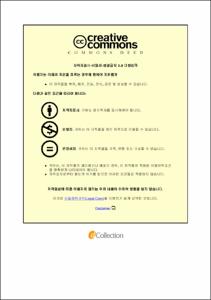자동화천자기구와 레이저천자기구 사용 발뒤꿈치 천자 후 신생아의 통증 및 생리적 반응 비교
- Alternative Title
- Comparison of pain and physiology in newborns after heel puncture using an automated puncture device and a laser puncture device
- Abstract
- Comparison of pain and physiology in newborns
after heel puncture using
an automated puncture device and a laser puncture device
Hea Jin, Lee
Department of Nursing, The Graduate School,
Pukyong National University
Directed by Professor Myoung Soo, Kim, PhD
Abstract
Purpose
This study aimed to compare the differences in pain responses (behavioral and physiological response), skin injury, hemostasis, and the number of punctures with an automatic puncture device and a laser puncture device during heel blood sampling in newborns.
Method
This was a prospective observational study targeting newborns admitted to the neonatal intensive care unit(NICU) of University Hospital I. A total of 53 newborns were included and 71 puncture records were obtained.
The tools and markers used were the neonatal infant pain scale (NIPS), heart rate, oxygen saturation, skin injury(erythema, bruise, scar), hemostasis, number of punctures, and facial analysis mobile app. The skin injury evaluation time points were before the puncture, immediately after the puncture, 3 minutes after the puncture, and 24 hours after the puncture. Repeated measures ANOVA was used to determine the differences in pain response(behavioral and physiological response) with time according to the puncture method.
Result
The results verified the differences in the percentage of skin injury(erythema, edema, bruise, scar) according to the puncture method used. Significantly different scars were observed in one case(2.9%) with the laser puncture device and seven case(18.9%) with the automated puncture device at 3 minutes after the puncture(χ²=4.52, p=.033). One case(2.9%) with the laser puncture device and 31 cases(83.78%) with the automated puncture device were significantly different(χ²=46.77, p< .001) 24 hours after the puncture.
The number of punctures showed a significant difference according to the puncture method(t=7.94, p<.001). The laser puncture device(2.41±1.05) showed a higher number of punctures than the automatic puncture device(1.03±0.16). Hemostasis with the laser puncture device(1.12±0.03) was significantly lower(t= 8.61, p<.001) than that with the automated puncture device(1.84 ±0.37). Correlations between anger, contempt, disgust, fear, happiness, neutral, sadness, and surprise in pain behavioral response and facial expression analysis were also conducted. Significant positive correlations were observed between pain behavioral responses and anger(r=.24, p=.045), disgust (r=.27, p=.023), fear(r=.29, p=.015), and sadness(r=.25, p=.017) in facial expression analysis. In addition, facial expression in the subcategory of pain behavioral response showed a significant positive correlation with anger(r=.12, p=.031).
Crying a subcategory of pain behavioral response showed significant positive correlations with fear(r=.28, p=.019) and sadness(r=.26, p=.031) in facial expression analysis. Finally, no significant differences in pain behavioral responses(F=2.09, p= .153), heart rate(F=0.09, p=.760), and oxygen saturation(F= 0.15, p=.705) were observed according to the puncture method.
Conclusion
There were no significant differences among pain responses according to the puncture method. Significant differences were observed in skin injury, hemostasis, and the number of punctures, according to the puncture methods used. In addition, positive correlations were observed between pain behavioral responses and the facial expressions of anger, disgust, fear, and sadness. Hence, when performing painful punctures in clinical practice, an instrument that considers the conditions and characteristics of a newborn should be selected.
- Issued Date
- 2022
- Awarded Date
- 2022. 8
- Type
- Dissertation
- Publisher
- 부경대학교
- Alternative Author(s)
- Hea Jin, Lee
- Affiliation
- 부경대학교 대학원
- Department
- 대학원 간호학과
- Advisor
- 김명수
- Table Of Contents
- Ⅰ.서론 1
1.연구의 필요성 1
2.연구 목적 3
3.용어 정의 4
Ⅱ.문헌고찰 8
1.신생아 천자 방법 8
2.신생아의 통증과 관련된 반응 12
Ⅲ.연구 방법 15
1.연구 설계 15
2.연구 대상 15
3.자료 수집 절차 16
4.연구 도구 20
5.자료 분석 방법 23
Ⅳ.연구 결과 25
1.대상자의 특성 25
2.천자 방법에 따른 피부 상태의 비교 27
3.천자 방법에 따른 천자횟수, 지혈비교 28
4.통증행동반응과 얼굴표정분석의 상관성 29
5.천자방법에 따른 통증 반응 30
Ⅴ.논의 32
Ⅵ.결론 및 제언 36
참고문헌 38
부록 51
[부록 1] 연구 대상자 설명문 및 동의서 51
[부록 2] 증례 기록지 57
[부록 3] 신생아 통증 사정 도구 64
[부록 4] IRB 심의결과 통지서 65
[부록 5] 연구 도구 승인서 66
- Degree
- Master
- Files in This Item:
-
-
Download
 자동화천자기구와 레이저천자기구 사용 발뒤꿈치 천자 후 신생아의 통증 및 생리적 반응 비교.pdf
기타 데이터 / 1.76 MB / Adobe PDF
자동화천자기구와 레이저천자기구 사용 발뒤꿈치 천자 후 신생아의 통증 및 생리적 반응 비교.pdf
기타 데이터 / 1.76 MB / Adobe PDF
-
Items in Repository are protected by copyright, with all rights reserved, unless otherwise indicated.